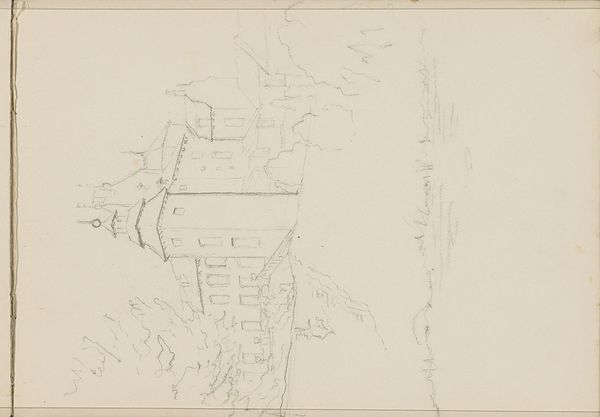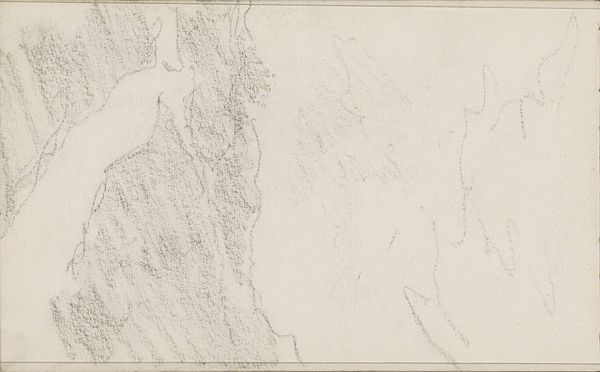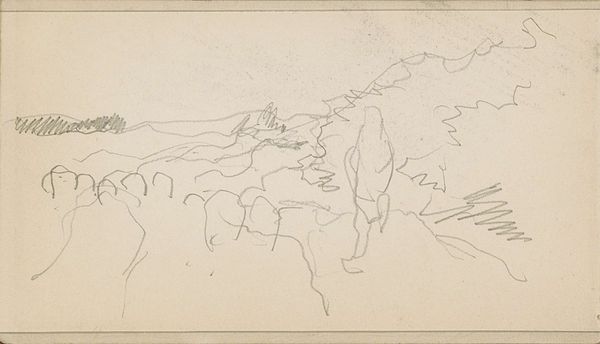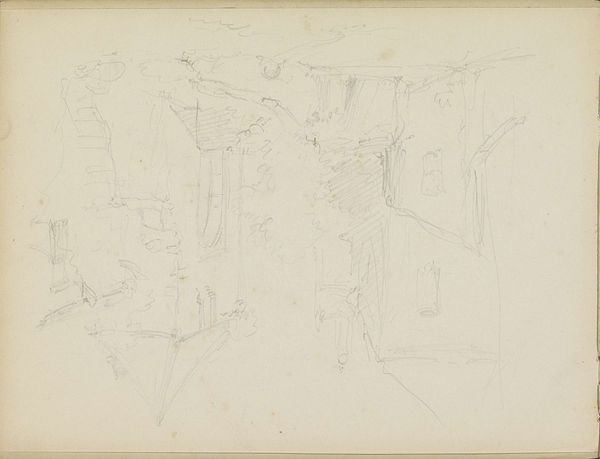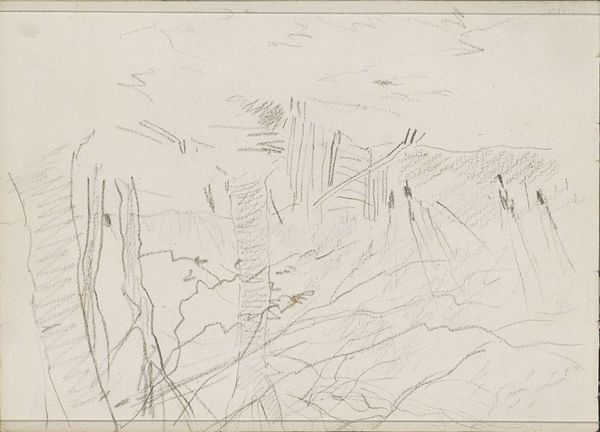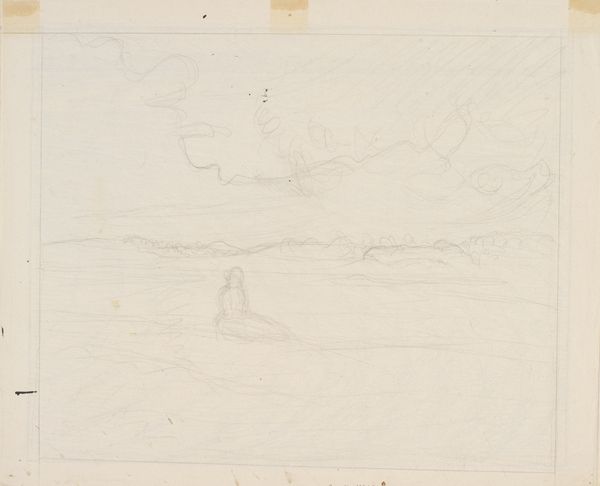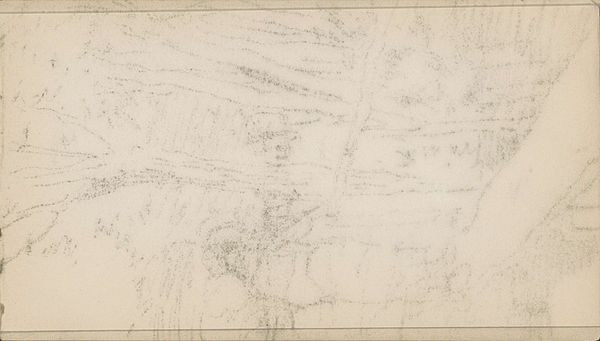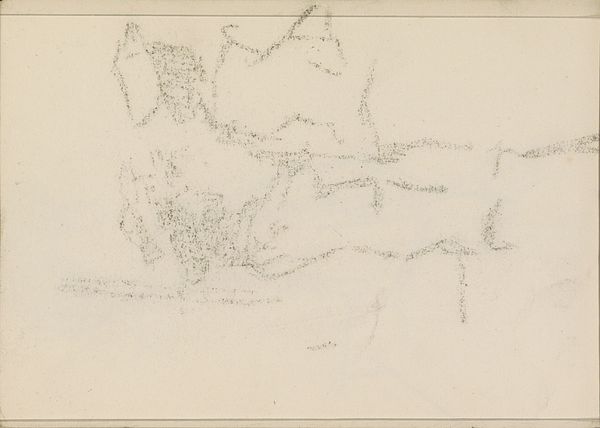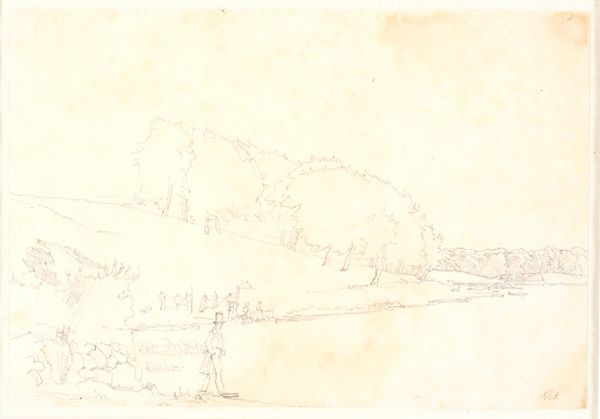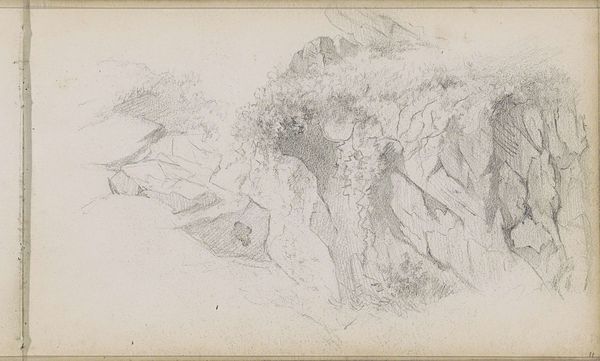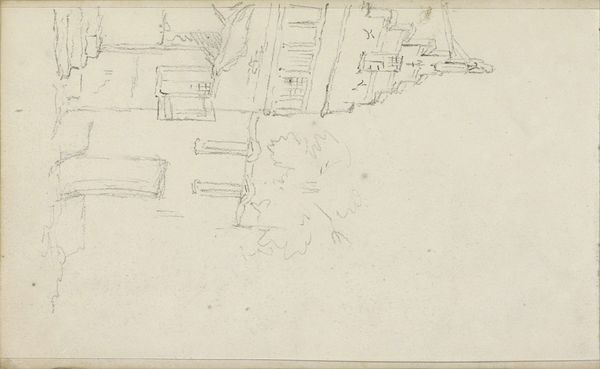
drawing, paper, pencil
#
drawing
#
landscape
#
paper
#
pencil
#
realism
Copyright: Rijks Museum: Open Domain
Curator: Here we have Jacobus Everhardus Josephus van den Berg's pencil drawing from 1830, "Coast of Amalfi." It's a realistic landscape rendered on paper. Editor: My first thought is that it feels almost like a dream. The pale pencil strokes create this ethereal, soft quality, like a memory of a place rather than a strict depiction. Curator: Precisely. While realistic in its subject matter, the work exemplifies the Romantic era's interest in capturing feeling and experience, fitting into a larger context of landscape art used as nationalistic and political statements in the early 19th century. How do you interpret this connection here? Editor: Well, the choice of Amalfi itself is telling. Italy was a significant site of cultural and artistic pilgrimage. By depicting it, Van den Berg places himself within a lineage of artists who sought to connect with history, with beauty, but, perhaps more importantly, with privilege. Who gets to travel and experience these picturesque locales? That’s always part of the subtext. Curator: That is a valid point. The art market shaped what landscapes were deemed worthy of representation, and access was inevitably dictated by social position and wealth. Van den Berg certainly benefited from the patronage system that supported artistic production during his lifetime. This work reminds us that art and cultural consumption were entangled in broader social and economic structures. Editor: It makes me wonder about the relationship between the landscape, the architectural elements sparsely represented in the work, and the local populations who lived and labored in the area. This depiction of a serene, sublime coastline probably elides some socio-political realities about who actually inhabited this place. Curator: Certainly, that tension between the idealized view and the reality of daily life is crucial. This drawing invites us to analyze what’s present but also what remains conspicuously absent, namely the lives of those whose labor underpinned the Amalfi Coast. Editor: It reminds us that even seemingly simple sketches can open doors to broader questions about representation, power, and the enduring legacy of place. Curator: A perspective I’ll consider deeply as I continue researching the role that these apparently placid images played in solidifying socio-economic structures.
Comments
No comments
Be the first to comment and join the conversation on the ultimate creative platform.
